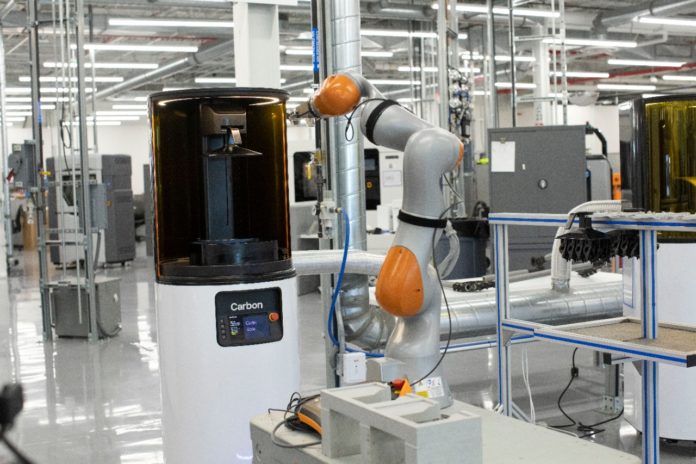You may want to know Javier, the new operator at Ford’s Advanced Manufacturing Center whose task is only to operate the 3D printers of the car manufacturer.
According to Ford, the new operator is always on time, very precise in his movements and he works most of the day – taking only a short break to charge up because he is an autonomous mobile robot. Supplied by robotics company KUKA, named Javier by his other human fellow operators, the autonomous mobile robot currently operates Carbon 3D printers.
“This new process has the ability to change the way we use robotics in our manufacturing facilities,” said Jason Ryska, director, global manufacturing technology development. “Not only does it enable Ford to scale its 3D printer operations, it extends into other aspects of our manufacturing processes – this technology will allow us to simplify equipment and be even more flexible on the assembly line.”
Ford has achieved great accuracy with Javier, using his feedback to significantly reduce margins of error. In addition to 3D printers, the method can be applied to a vast array of robots already working at the company to increase efficiency and reduce cost. In its drive to innovate, Ford has filed several patents related to the overall process, communication interfaces and precise positioning of the robot, which does not require use of a camera vision system to “see.”
Typically, different pieces of equipment from various suppliers are unable to interact because they do not run the same communication interface. Ford developed an application interface program that allows different pieces of equipment to “speak the same language,” and send constant feedback to each other. For example, the Carbon 3D printer tells the KUKA autonomous mobile robot when the printed product will be finished, then the robot lets the printer know the robot has arrived and is ready for pick-up. This innovative communication is what makes the whole process possible.
Javier enables Ford to operate its 3D printers all night long, even after employees have left for the day. Not only does this increase throughput, it reduces the cost of custom-printed products. Ford has used the printer to make low-volume, custom parts, such as a brake line bracket for the Performance Package-equipped Mustang Shelby® GT500.
While the process itself is autonomous, Ford operators are responsible for uploading 3D designs to the printer and maintaining the machinery, and for engineering new ways to use the technology.
Remember, you can post job opportunities in the AM Industry on 3D ADEPT Media free of charge or look for a job via our job board. Make sure to follow us on our social networks and subscribe to our weekly newsletter : Facebook, Twitter, LinkedIn & Instagram ! If you want to be featured in the next issue of our digital magazine or if you hear a story that needs to be heard, make sure you send it to contact@3dadept.com






